Day 135 We started our morning as usual, coffee and breakfast. We then headed for Curtis Falls. It was a very nice hike. The path basically never left the side of the creek. There were a few very small falls along the way creating rock pools. It was not the best trail for location however. The return leg of the hike was very close to the main mountain access road, so we could hear the cars and the occasional truck struggling up the incline.
From there we drove to the Glow Worm Caves. They were a side attraction at one of the local wineries. We got there and signed up for the next tour. The tour guide a pretty funny bloke took us into the "man made" rainforest. This particular forest was started 12 years ago, and along with the caves was built for the Glow Worms. These worms were just fascinating. They have been around some 60 million years, and were doing great till tourism. They are now only found in Australia and New Zealand. They are very sensitive to pretty much everything, white light, touch, noise, even people breathing on them. We walked through a red light lit corridor and into the cave. It is pitch black, except for tiny red lights down the center of the path. In order for us to see each other we were given glow in the dark necklaces. Anyway you walk in and it is like the stars on a clear night up north. Thousands of teeny little glowing dots, some brighter than others. The brightness can depend on the worms hunger factor or its size. The little ones you can see glow but they are invisible otherwise. The worms glow to attract food. Their bioluminescent light is the most efficient light on the planet as it is 99% light, 1% heat. Compare that to an energy saver light bulb that creates 10% light, 90% heat. Their light genes have even been used in cancer research. The gene is fused with cancer
cells and put back in the body. When they test drugs on the cells the light either fades or not depending on whether the drug is affective. They live on the cave walls and ceilings, in what looked like tiny hammocks. The tour guide lit one up with a red night light. Hanging in front of the hammocks were little inch long strands of silk spit up by the worm to catch the attracted insects. Because the cave had doors the guides go out every morning and catch insects in butterfly nets and release them in the cave. The insects think the glow worms are stars and try to fly away but end up in the silk. The worm sheds its skin 4 times in a year to reach maturity, eating as much as it can before it turns into a mosquito like insect. During this transformation it loses its digestive system and replaces it with a reproductive one. They then live for about 48 hours, reproducing for 30 of that and spending the rest laying 130 or so individual eggs. Sounds like a lesson but it's crazy when you think about it. We had lunch after the cave and fit in one more hike at the Palm Grove Trail. This was on the other side of the mountain facing the Gold Coast. You could clearly see all the high rise buildings of the busy
coast from this secluded mountain plateau. The walk was as cool as all the others. We did however see a massive Black Bean tree which was astounding. The Black Bean tree seed has also been linked to cancer research as it contains an enzyme that is used as a suppressant. Some of the biggest trees in the forest started out as vines. They wrap themselves around other trees grow all around them till the wrapped up tree gets smothered and dies. We missed having a BBQ for breakfast so for the night we headed back to the Knoll.
Glow In The Dark
Thursday, July 05, 2012
 Surfers Paradise, Queensland, Australia
Surfers Paradise, Queensland, Australia
Other Entries
-
29Its Been A While...
Apr 2076 days prior Chinchilla, Australiaphoto_camera15videocam 0comment 2
Chinchilla, Australiaphoto_camera15videocam 0comment 2 -
30Farm To Farm
Apr 2769 days prior Chinchilla, Australiaphoto_camera9videocam 0comment 0
Chinchilla, Australiaphoto_camera9videocam 0comment 0 -
31Lunch and a Movie
May 0165 days prior Chinchilla, Australiaphoto_camera3videocam 0comment 0
Chinchilla, Australiaphoto_camera3videocam 0comment 0 -
32Bunya Mountain
May 0858 days prior Chinchilla, Australiaphoto_camera32videocam 0comment 3
Chinchilla, Australiaphoto_camera32videocam 0comment 3 -
33Picking N Pigging
May 2541 days prior Chinchilla, Australiaphoto_camera19videocam 0comment 2
Chinchilla, Australiaphoto_camera19videocam 0comment 2 -
34Chinchilla Turns 100!!!
May 2739 days prior Chinchilla, Australiaphoto_camera22videocam 0comment 1
Chinchilla, Australiaphoto_camera22videocam 0comment 1 -
35Our First One Night Stand
Jun 0332 days prior Chinchilla, Australiaphoto_camera8videocam 0comment 0
Chinchilla, Australiaphoto_camera8videocam 0comment 0 -
36Bran Van 2012
Jun 0926 days prior Chinchilla, Australiaphoto_camera21videocam 0comment 0
Chinchilla, Australiaphoto_camera21videocam 0comment 0 -
37Injune, In June
Jun 1025 days prior Injune, Australiaphoto_camera0videocam 0comment 0
Injune, Australiaphoto_camera0videocam 0comment 0 -
38Can-our-van (Carnarvon) Gorge
Jun 1124 days prior Injune, Australiaphoto_camera30videocam 1comment 2
Injune, Australiaphoto_camera30videocam 1comment 2 -
39Serenity
Jun 1223 days prior Injune, Australiaphoto_camera28videocam 1comment 0
Injune, Australiaphoto_camera28videocam 1comment 0 -
40Cold As Ice
Jun 1619 days prior Chinchilla, Australiaphoto_camera19videocam 0comment 4
Chinchilla, Australiaphoto_camera19videocam 0comment 4 -
41Work...Hunt...Work...Hunt
Jun 269 days prior Chinchilla, Australiaphoto_camera3videocam 0comment 0
Chinchilla, Australiaphoto_camera3videocam 0comment 0 -
42Rain Delay
Jun 305 days prior Chinchilla, Australiaphoto_camera9videocam 0comment 0
Chinchilla, Australiaphoto_camera9videocam 0comment 0 -
43Off To See...
Jul 023 days prior Ipswitch, Australiaphoto_camera0videocam 0comment 0
Ipswitch, Australiaphoto_camera0videocam 0comment 0 -
44Silver Platter
Jul 032 days prior North Tamborine, Australiaphoto_camera16videocam 0comment 1
North Tamborine, Australiaphoto_camera16videocam 0comment 1 -
45Hiking & Tasting
Jul 041 day prior North Tamborine, Australiaphoto_camera19videocam 0comment 0
North Tamborine, Australiaphoto_camera19videocam 0comment 0 -
46Glow In The Dark
Jul 05 Surfers Paradise, Australiaphoto_camera15videocam 1comment 1
Surfers Paradise, Australiaphoto_camera15videocam 1comment 1 -
473Cs (Coast, Casino, Comedy)
Jul 083 days later Chinchilla, Australiaphoto_camera5videocam 1comment 0
Chinchilla, Australiaphoto_camera5videocam 1comment 0 -
48Aaaaaaagh!
Jul 1611 days later Goomeri, Australiaphoto_camera6videocam 0comment 0
Goomeri, Australiaphoto_camera6videocam 0comment 0 -
49Wine Tour
Jul 1712 days later Tewantin, Australiaphoto_camera19videocam 0comment 1
Tewantin, Australiaphoto_camera19videocam 0comment 1 -
50Little Wet
Jul 1813 days later Noosa Heads, Australiaphoto_camera3videocam 0comment 0
Noosa Heads, Australiaphoto_camera3videocam 0comment 0 -
51Ginger & Nuts
Jul 1914 days later Yandina, Australiaphoto_camera11videocam 0comment 1
Yandina, Australiaphoto_camera11videocam 0comment 1 -
52Mostly Pics
Jul 2015 days later Coolum Beach, Australiaphoto_camera18videocam 0comment 0
Coolum Beach, Australiaphoto_camera18videocam 0comment 0 -
53Aussie Bust
Jul 2116 days later Caloundra, Australiaphoto_camera5videocam 0comment 0
Caloundra, Australiaphoto_camera5videocam 0comment 0 -
54Crikey!!!!
Jul 2217 days later Beerwah, Australiaphoto_camera27videocam 6comment 4
Beerwah, Australiaphoto_camera27videocam 6comment 4 -
55Fired!
Jul 2621 days later Chinchilla, Australiaphoto_camera15videocam 1comment 0
Chinchilla, Australiaphoto_camera15videocam 1comment 0 -
56Over & Out
Aug 0834 days later Chinchilla, Australiaphoto_camera13videocam 0comment 0
Chinchilla, Australiaphoto_camera13videocam 0comment 0 -
57Alternate Ending
Aug 0935 days later Theodore, Australiaphoto_camera0videocam 0comment 0
Theodore, Australiaphoto_camera0videocam 0comment 0 -
58Rocky Road To Rocky
Aug 1137 days later Rockhampton, Australiaphoto_camera8videocam 0comment 0
Rockhampton, Australiaphoto_camera8videocam 0comment 0 -
59Hotel Living
Aug 1541 days later Rockhampton, Australiaphoto_camera5videocam 0comment 1
Rockhampton, Australiaphoto_camera5videocam 0comment 1 -
60Taxes N Tatas
Aug 1642 days later Emu Park, Australiaphoto_camera3videocam 0comment 0
Emu Park, Australiaphoto_camera3videocam 0comment 0 -
61Croc Farm & Emu Park
Aug 1743 days later Yeppoon, Australiaphoto_camera18videocam 0comment 1
Yeppoon, Australiaphoto_camera18videocam 0comment 1 -
62Didn't Quite Make It
Aug 1945 days later Carmila, Australiaphoto_camera15videocam 0comment 0
Carmila, Australiaphoto_camera15videocam 0comment 0 -
632034 & The Bible
Aug 2147 days later Mackay, Australiaphoto_camera8videocam 0comment 0
Mackay, Australiaphoto_camera8videocam 0comment 0 -
64Orchids & Soldier Crabs
Aug 2349 days later Mackay, Australiaphoto_camera8videocam 1comment 1
Mackay, Australiaphoto_camera8videocam 1comment 1

 Surfers Paradise, Queensland, Australia
Surfers Paradise, Queensland, Australia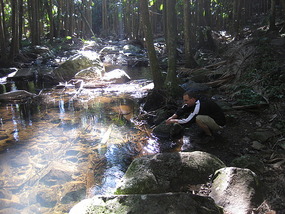
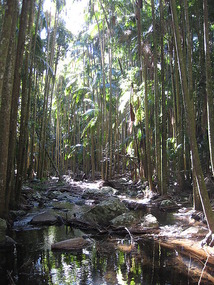
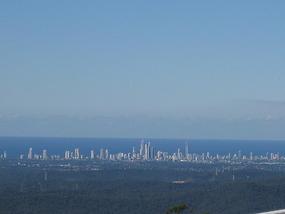

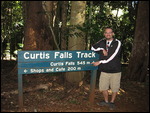
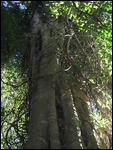
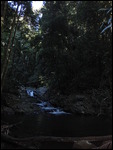
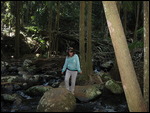
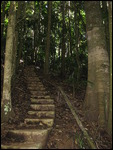
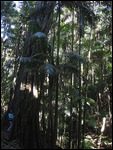
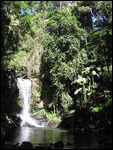
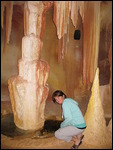
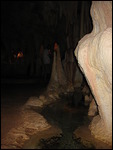
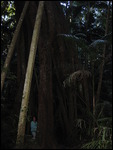
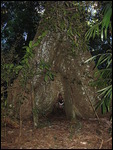
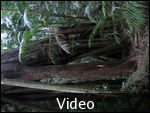
2025-05-23